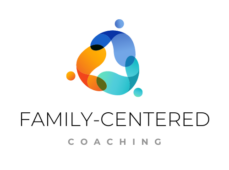The Stages of Change identify the emotional and psychological states many people go through when making a change in their lives. Use the stages of change as a guide to better understand how the participant feels and what coaching approach best meets a participant’s needs.
| Stage of Change | Parent’s Perspective | Suggested Approach |
| Not Ready for Change | “I need x” “I can’t think about change.” | Case Management |
| Pre-Contemplation | “Change what?” “I won’t.” “I can’t.” | Discovery (Readiness Assessment) |
| Contemplation | “Change? Maybe.” “I might.” “I may.” | Discovery (Readiness Assessment) |
| Preparation | “Yes. But how?” “I will.” | Discovery (Readiness Assessment) |
| Action | “I’m ready.” “Let’s do it.” “I am.” | Goal Setting & Practice |
| Maintenance | “How do I keep it going?” “I still am.” | Goal Setting & Practice |
| Relapse/Recycle | “If I slip, what can I do?” “I’m not sure.” | Discovery (Readiness Assessment) |
The emotions someone experiences during each stage of change are normal and valid. Someone who is taking action is not “further ahead” than someone who is contemplating change. Resist the temptation to judge people based on where they are in the stages of change and instead, provide coaching that will best support a participant no matter where they are.
A participant may be at a different stage of change in different areas of their lives. For example, a participant’s readiness for work may be different from their readiness to take action on a family relationship. Understanding a participant’s stage of change is important because change can be difficult, resistance normal. Understanding the stages of change will help you know where the participant is in the change process and how to coach participants.
Most participants want to make changes but there are often long-standing institutional forces, including systemic racism, that impact a participant’s psychological, social, and physical ability to create change. For example, a participant might be ready to get a job but cannot pursue that goal because of the cost of childcare. Similarly, a participant might want to improve their child’s performance in school, but their school is underfunded and under-resourced. Coaches can use a racial equity lens to avoid putting undue burden on the individual to make change and evaluating a participant’s outcomes based solely on individual effort. Coaches and their organizations have an opportunity to create changes in their own organizations, communities, and networks to remove systemic barriers that create an environment where change is possible.
Assessing Readiness to Change
There are two main ways to assess a participant’s readiness for change.
1. Look for signs of a participant’s readiness to change.
- The person seems to have “talked through” their area of concern. Some participants may become quieter or more settled. Other participants might feel some loss associated with the situation and could be tearful or resigned.
- The person increases how much they talk about making the change including their reason for changing, intention to change, or problems with the way things are.
- The person may start asking questions about change, such as what he or she could do about the problem, or how other people change.
- The person starts talking about how things might be if they made the change: both the positive outcomes and the challenges of making the change.
- The person talks about trying out some new actions related to the change.
2. Ask directly about their readiness to change.
- Ask open-ended questions and reflect back what you hear.
- How prepared do you feel to make some changes in this area?
- What are some of the things that have got you thinking about making a change?
- What would have to happen for you to be more ready to consider making a change?
- What are some of the things that make you unsure about making a change?
- If appropriate, ask a key question
- Where does this leave you now?
- If the person does not appear to be ready for change, reflect this back and leave the door open for future discussion.
Adapted from “Tools to Strengthen Families and Communities: A Compendium,” National Program Office of Free To Grow Mailman School of Public Health, Columbia University.
The Prosperity Agenda provides these resources as the designated national administrator of Family-Centered Coaching.

